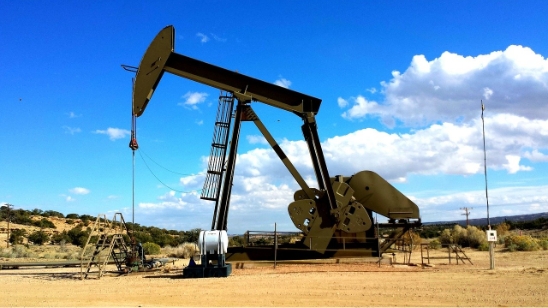Sector Introduction
The extractive industries in the UK comprise oil and gas production, mining and quarrying. The sector continues to play a major role in the UK economy. Latest official figures show the sector contributing total Gross Value Added (GVA) of £28 billion in 2024, down from £32 billion in 2023, and directly providing between 50,000 and 60,000 jobs in the private sector.

Overview of the extractive sectors in the UK
The UK’s extractive industries comprise oil and gas production, mining and quarrying. The extractive sector has made a sizeable contribution to the UK economy for many years and remains an important sector directly providing between 50,000 and 60,000 jobs in the private sector. In 2024, UK extractives industry gross value added (GVA) was £28 billion, down from £32 billion in 2023, according to latest official statistics. The extraction of oil and gas and associated support service activities accounts for close to 95% of the sector’s GVA. More detailed information on the sector in general and the oil and gas and mining and quarrying sectors in the UK is given elsewhere on the UK EITI website.
Oil and Gas sector
The UK oil and gas industry is in its sixth decade of offshore production. Despite the maturity of the sector there are still significant opportunities in responsible oil and gas recovery along with those presented by the sector’s positive contribution to the drive to net zero greenhouse gas emissions.
UK oil and net gas production peaked at a rate of 4.5 million barrels of oil equivalent a day (boepd) in 1999. Production in 2022 was only 1.4 million boepd. Production rates of both oil and gas in the next decade and longer term are expected to continue to decline with especially rapid falls for gas. To achieve the projected rate of decline will require continued investment in parallel with investment in wind generation, hydrogen and carbon storage to support the transition to a low-carbon economy as the UK works to meet its legally-binding target to bring greenhouse gas (GHG) emissions to net zero by 2050. Through the North Sea Transition Deal, agreed with the UK Government in 2021, the sector has committed to halve its own GHG emissions by 2030 compared with a 2018 baseline. It has separately committed to cut them by 90% by 2040 and be net zero by 2050.
Four new offshore field developments plus two redevelopments were approved in 2023, and drilling activity remained close to historically low levels.
The UK oil and gas industry supports hundreds of thousands of jobs in Scotland and across the rest of the UK. According to latest ONS data, the sector was directly responsible for around 30,000 jobs in 2022, with many more supported in the industry’s wider supply chain plus those jobs that depend on the UK’s oil and gas industry. OEUK has estimated that over 200,000 jobs in the UK were supported directly or indirectly by the upstream oil and gas industry in 2021, many of them highly skilled.
The prioritisation and protection of employees’ health and safety offshore and onshore remains industry’s primary concern. Whilst cost control and capital discipline remain high on industry’s agenda, the ingenuity of the UK oil and gas industry’s people and the communities they work in cement the long-standing importance of this industry to the UK’s economy. This is not just through the payment of production taxes and licence fees (as disclosed in the EITI payments report), but also ensuring the UK’s security of energy supply through providing the equivalent of 61% of the UK’s oil demand and 54% of the UK’s gross gas demand in 2022, thus reducing significantly the cost of oil and gas imports, as well as through the development of technology, innovation and skills that cascade out of industry and often support the transition to a lower carbon future.
Maintaining investment in the sector is an important element of ensuring a fair and managed transition for workers. Whilst transitioning to a net-zero economy will present employment opportunities, concerns as to how this can be done equitably and with opportunities for the current workforce to re-skill and transition are key for communities dependent on the oil and gas industry as a primary employer.
Mining and Quarrying Sector
Construction minerals
Construction minerals are essential to the UK economy, improving our housing stock, transport networks, commercial and industrial buildings, energy and water infrastructure, schools and hospitals. The main element of construction minerals in volume terms is the extraction of primary aggregates, including quarried crushed rock and both land-won and marine dredged sand & gravel.
The Mineral Products Association estimates (1) that 191.1 million tonnes of primary aggregates were produced in the UK in 2022, representing 2.5 times the total tonnage of energy minerals produced in the same year. Within primary aggregates, 135.1 million tonnes of crushed rock and 56 million tonnes of sand & gravel were produced. Marine-dredged aggregates satisfied 14 million tonnes (25%) of the total construction needs for sand & gravel in 2022 (2).
Construction minerals extraction and related downstream manufacturing activities are distributed throughout the UK and extraction businesses make a variety of tax, financial and non-financial contributions to national and local governments and local communities that are outside the current scope of EITI reporting. This includes the Aggregates Levy, employment taxes and businesses rates.
The Aggregates Levy was introduced in 2002 as an environmental tax applied to all primary aggregate sales in the UK with the aim to encourage recycling and use of by-products from other industrial processes. In 2022, the annual cost of the Aggregates Levy reached £378m (3).
Coal
Whilst coal still plays a part in the UK’s energy mix, its contribution is declining. Although the UK still has a significant coal resource there are only a small number of operating mines, predominantly opencast. In terms of underground mines, Eckington in Derbyshire, one of a few remaining small mines, closed in January 2019. That being said, West Cumbrian Coal received planning permission in March 2019 for the Woodhouse Colliery, which is anticipated could produce up to 3.1 million tonnes/year of metallurgical coal for the steelmaking industry.
Industrial and metal minerals
Mineral resources such as high-purity limestone and silica sand have numerous non-construction uses, ranging from iron and steel and glass making to cleaning acidic power station emissions and improving the performance and sustainability of UK agriculture. China Clay or Kaolin support a wide range of industrial markets including ceramics, paper and specialist applications such as fillers for pharmaceuticals, paints, adhesives and animal feeds, while Ball Clays are used principally in the ceramics industry for industrial applications, including sanitaryware, tile manufacture and tableware. Future extraction trends for industrial minerals will depend on movements in UK and overseas markets and on the competitiveness of operating costs and the business environment in the UK.
Over the last 18 months there have been significant developments in this area. Anglo American plc took over Sirius Minerals in March 2020 and development of the Woodsmith Mine, a major new polyhalite mine in the North Yorkshire moors is accelerating. In the South West, the Drakelands Tungsten mine that was closed in October 2018 has a new owner, Tungsten West, which is developing plans to restart the mine early in 2021. Elsewhere, plans to reopen the South Crofty Tin mine in Cornwall by Cornish Metals (formally Strongbow Exploration) continue and the company reported on a successful drilling programme in summer 2020. Cornish Lithium recently reported it has found “globally significant” lithium grades in geothermal waters and is preparing for work on its pilot plant. Cornwall Resources are also moving forward with the development of their Redmoor project, of a significant tin, tungsten and copper deposit and a mining scoping study has recently been completed. The significant resource of gold at Curraghinalt in Northern Ireland (Dalradian) and Cononish in Scotland (Scotgold), where a recent announcement has been made to accelerate plans to double production, are other exciting examples that illustrate the continuing importance of the UK as a mineral producer.
National Policies
The UK has had no overarching national mineral strategy, policy or plan recognising the economic importance of a steady supply of essential minerals and mineral products, from domestic sources or imported. Instead, the policy responsibility for the majority of mineral interests is a devolved matter. The current relevant planning documents for each part of the United Kingdom are:
- In England, the National Planning Policy Framework (England),
- In Scotland, the National Planning Framework 4.
- In Wales, Planning Policy Wales and Minerals Technical Advice Note 1 and 2 (MTAN1 and MTAN2)
- In Northern Ireland, Strategic Planning Policy Statement for Northern Ireland, (SPPS)
The English National Planning Policy Framework (NPPF) states in paragraph 203 that “It is essential that there is a sufficient supply of minerals to provide the infrastructure, buildings, energy and goods that the country needs. Since minerals are a finite natural resource, and can only be worked where they are found, best use needs to be made of them to secure their long-term conservation.”
In Scotland, Policy 33 within the National Planning Framework covers minerals. The minerals policy intention is to support the sustainable management of resources and minimise the impacts of the extraction of minerals on communities and the environment. While one of its main desired outcomes is to ensure sufficient resources are available to meet industry demands, making an essential contribution to the Scottish economy.
In 2018, in response to the lack of overarching strategy, the minerals industry produced a UK Minerals Strategy which sets out the importance of the sector to the UK economy and highlights measures necessary to ensure that demand for minerals and mineral products is supplied sustainably over the next 25 years. A second edition of the Strategy was published in 2022[4], addressing key issues that have emerged and evolved over the previous five years including:
Climate change: Net zero carbon, climate change mitigation, adaptation & resilience, implications for and contribution from minerals;
Nature recovery: Biodiversity gain, and contribution of minerals development, including the legacy provided by restored sites;
Essentiality: Stressing that while some minerals are considered critical, all are essential and may become critical should supply be compromised;
Replenishment: Continued under-replenishment of mineral reserves, production capacity and looming arbitrary end-dates on many reserves.
In July 2022, the UK government published the first Critical Minerals Strategy "Resilience for the Future: The UK's Critical Minerals Strategy", which set out plans for improving the resilience of critical minerals supply chains and increasing the UK’s security of supply. The strategy aims to accelerate the growth of the UK’s domestic capabilities, improve collaboration with international partners and enhance international markets to make them more responsive, transparent and responsible. This was updated in March 2023, with “Critical Minerals Refresh: Delivering resilience in a changing global environment” to reflect the changing global landscape and the sharpening of geopolitical competition.
Please note that under the UK EITI Open Data policy users can re-use the data in the tables and figures.
1. MPA. Profile of the UK Mineral Products Industry – 2023 Edition. Website : Mineral Products Association, 2023.
2. The Crown Estate. Marine Aggregates - The Crown Estate Licences: Summary of Statistics. Website : The Crown Estate, 2023.
3. HMRC. Environmental Taxes Bulletin. Website : HM Revenue & Customs, 2023. Statistics on the Aggregates Levy (AGL).
4. MPA. UK Minerals Strategy - Meeting the demand for minerals and mineral products sustainably for the next 25 years. Website : Mineral Products Association, 2022.

